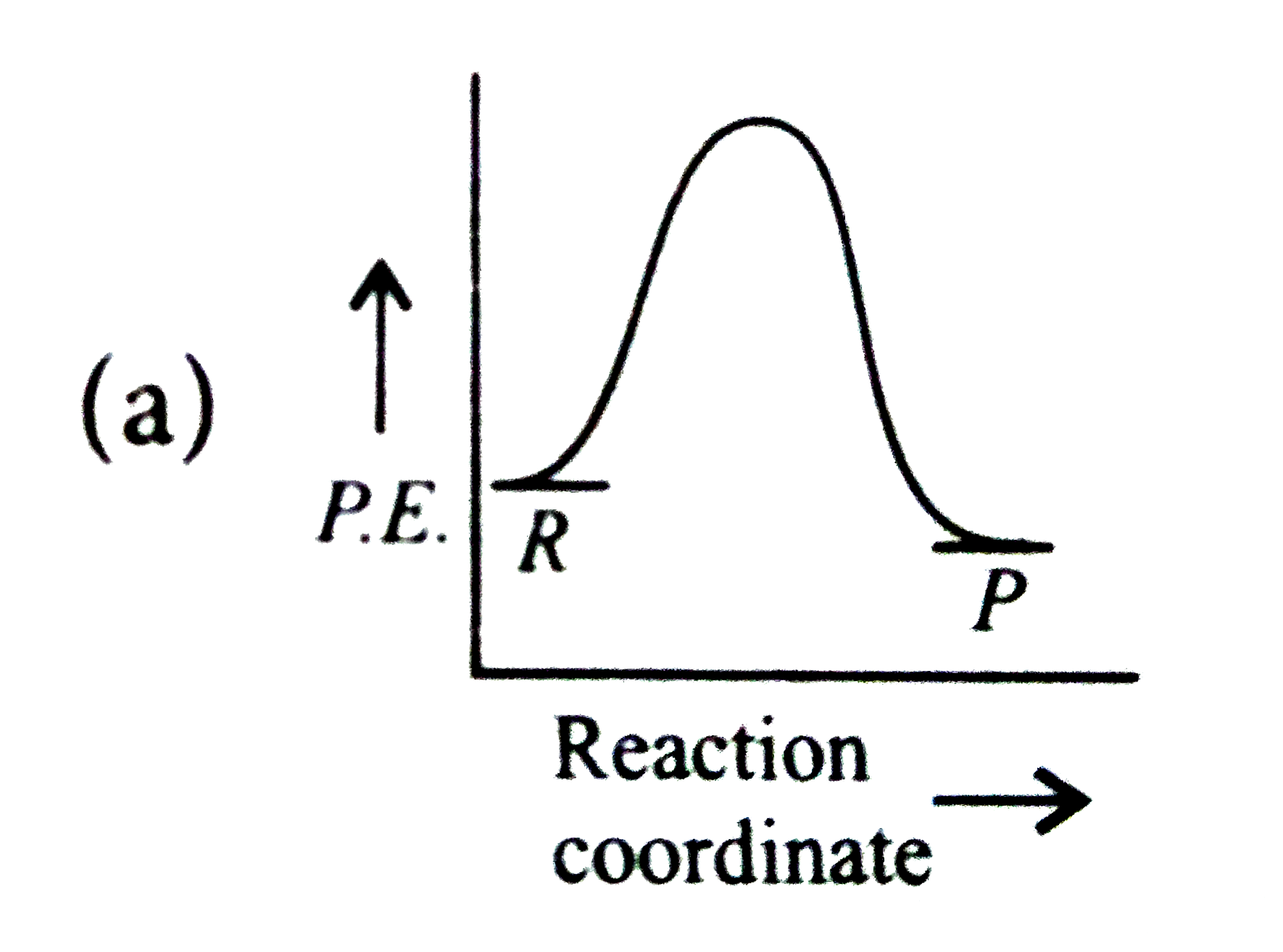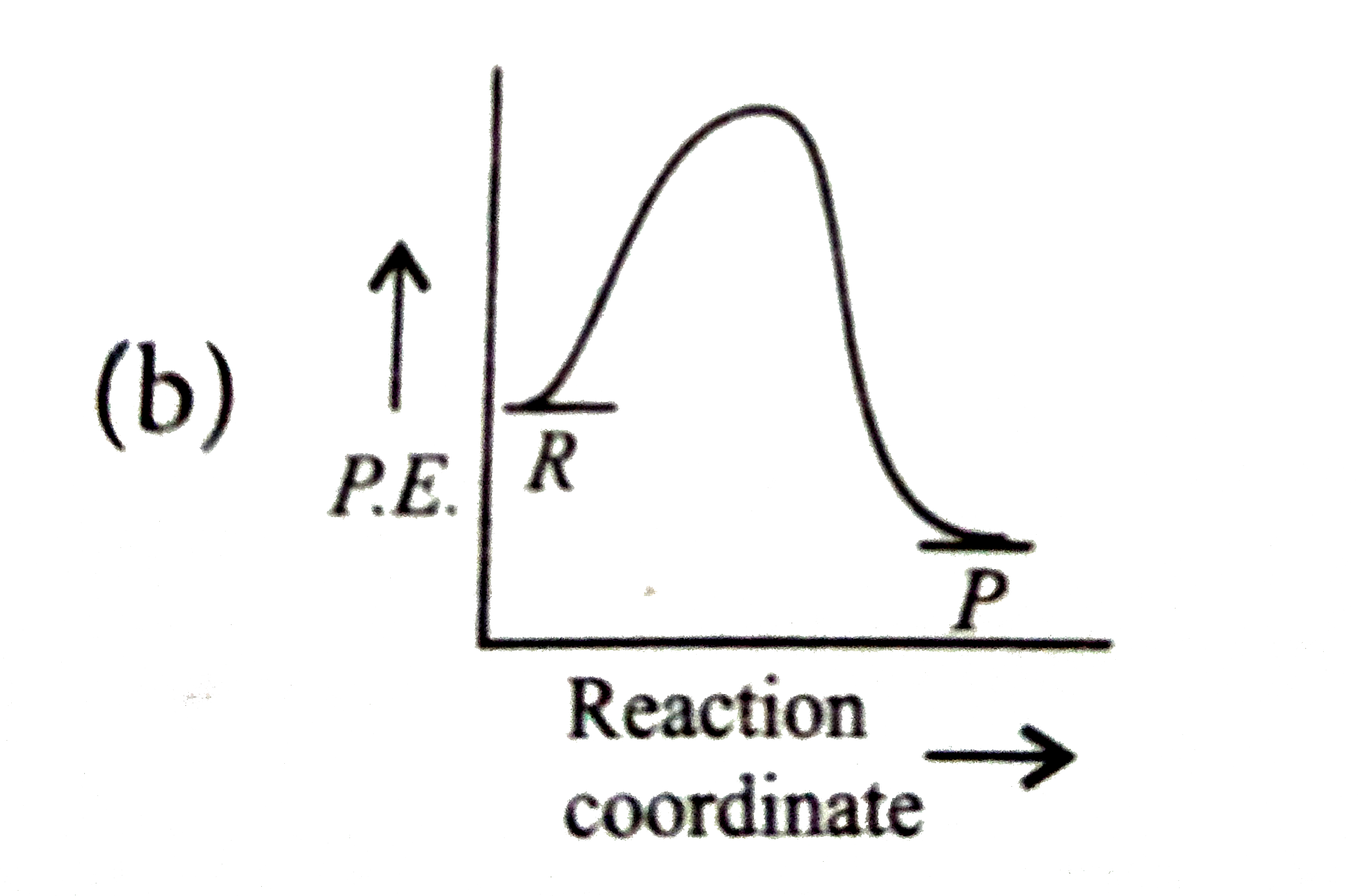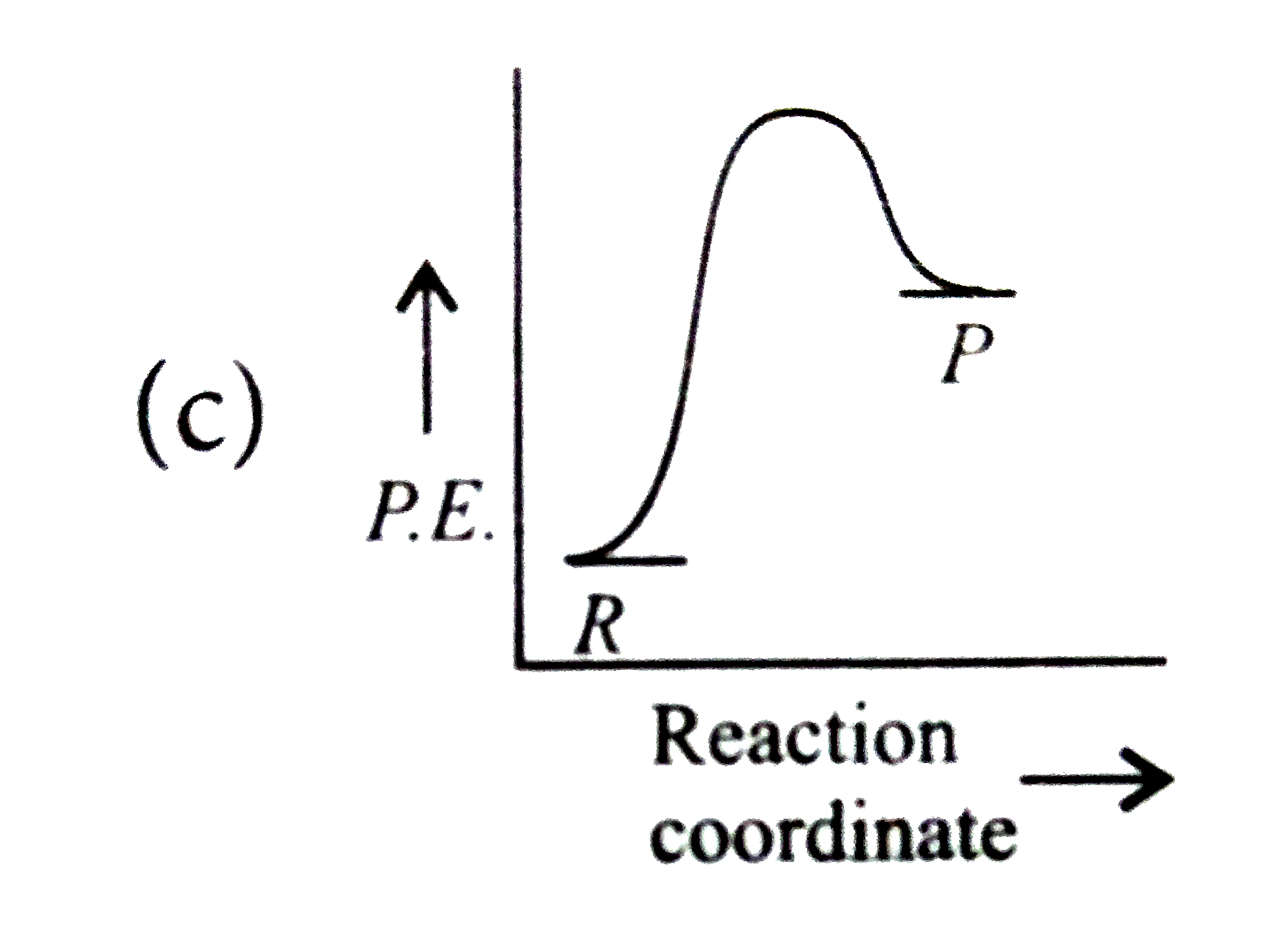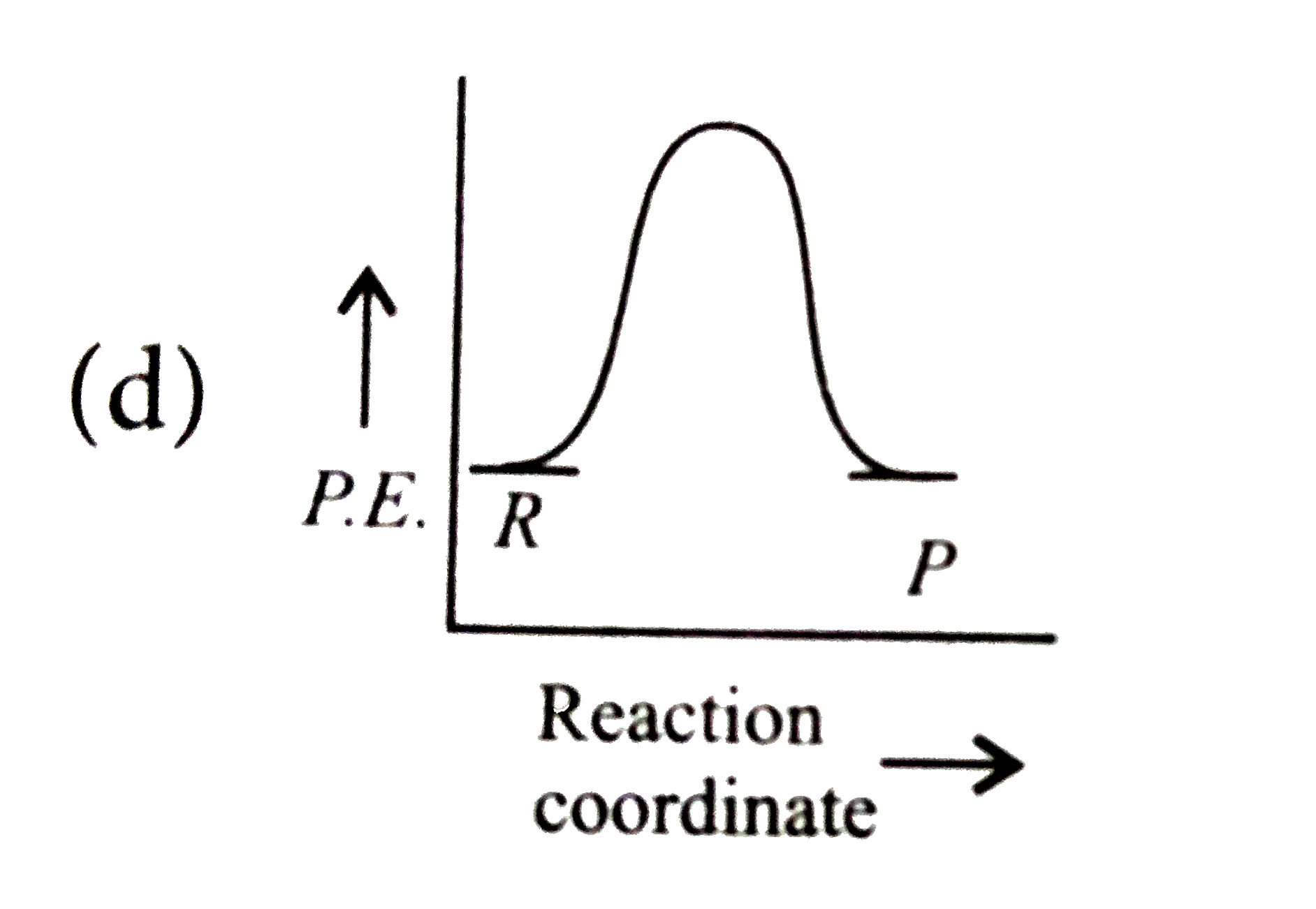Draw the potential energy diagram for an exothermic reaction. Explain the terms:
activation energy of forward reaction
Step-by-Step Solution:
1. Understanding Exothermic Reactions:
- An exothermic reaction is characterized by the release of energy, typically in the form of heat. In such reactions, the energy of the products is lower than that of the reactants.
2. Drawing the Potential Energy Diagram:
- Start by drawing a vertical axis representing potential energy and a horizontal axis representing the progress of the reaction.
- Mark a point on the left side of the graph for the energy of the reactants (higher energy).
- Draw a curve that rises to a peak (this represents the transition state) and then falls down to a point on the right side for the energy of the products (lower energy).
- Label the initial energy of the reactants, the peak energy (transition state), and the final energy of the products.
- Indicate the change in enthalpy (ΔH) as the vertical distance from the reactants to the products, which will be negative in this case.
3. Labeling Activation Energy:
- The activation energy (Ea) is the energy difference between the reactants and the transition state. This is the energy required to initiate the reaction.
- Draw a horizontal line from the energy level of the reactants to the peak (transition state) and label this distance as "Activation Energy (Ea)".
4. Indicating ΔH:
- Draw a vertical line from the energy level of the reactants down to the energy level of the products and label this distance as "ΔH". Since the products have lower energy than the reactants, ΔH will be negative.
Summary Diagram:
- The diagram will show:
- Reactants at a higher energy level.
- A peak representing the transition state.
- Products at a lower energy level.
- Activation energy (Ea) from reactants to the peak.
- Change in enthalpy (ΔH) from reactants to products.
Explanation of Terms:
- Activation Energy of Forward Reaction:
- This is the minimum amount of energy that the reactants must possess in order to undergo a transformation into products. It is the energy barrier that must be overcome for the reaction to proceed.
- An exothermic reaction is characterized by the release of energy, typically in the form of heat. In such reactions, the energy of the products is lower than that of the reactants.
- Start by drawing a vertical axis representing potential energy and a horizontal axis representing the progress of the reaction.
- Mark a point on the left side of the graph for the energy of the reactants (higher energy).
- Draw a curve that rises to a peak (this represents the transition state) and then falls down to a point on the right side for the energy of the products (lower energy).
- Label the initial energy of the reactants, the peak energy (transition state), and the final energy of the products.
- Indicate the change in enthalpy (ΔH) as the vertical distance from the reactants to the products, which will be negative in this case.
- The activation energy (Ea) is the energy difference between the reactants and the transition state. This is the energy required to initiate the reaction.
- Draw a horizontal line from the energy level of the reactants to the peak (transition state) and label this distance as "Activation Energy (Ea)".
- Draw a vertical line from the energy level of the reactants down to the energy level of the products and label this distance as "ΔH". Since the products have lower energy than the reactants, ΔH will be negative.
- The diagram will show:
- Reactants at a higher energy level.
- A peak representing the transition state.
- Products at a lower energy level.
- Activation energy (Ea) from reactants to the peak.
- Change in enthalpy (ΔH) from reactants to products.
- Activation Energy of Forward Reaction:
- This is the minimum amount of energy that the reactants must possess in order to undergo a transformation into products. It is the energy barrier that must be overcome for the reaction to proceed.
Topper's Solved these Questions
- CHEMICAL KINETICSBOOK - ICSECHAPTER - CHEMICAL KINETICSEXERCISE - ISC EXAMINATION QUESTIONS (PART-I (OBJECTIVE QUESTIONS ) A.FILL IN THE BLANKS)
12 Videos
- CHEMICAL KINETICSBOOK - ICSECHAPTER - CHEMICAL KINETICSEXERCISE - ISC EXAMINATION QUESTIONS (PART-I (OBJECTIVE QUESTIONS ) B .COMPLETE THE FOLLOWING STATEMENTS BY SELECTING THE CORRECT ALTERNATIVE FROM THE CHOICES GIVEN :)
21 Videos
- CHEMICAL KINETICSBOOK - ICSECHAPTER - CHEMICAL KINETICSEXERCISE - EXERCISE (PART- II (DESCRIPTIVE QUESRTIONS) B. SHORT ANSWER QUESTIONS )
119 Videos
- BIOMOLECULESBOOK - ICSECHAPTER - BIOMOLECULESEXERCISE - ISC EXAMINATION QUSTIONS (PART-I)(DESCRIPTIVE QUESTIONS)
21 Videos
- CHEMISTRY IN EVERYDAY LIFEBOOK - ICSECHAPTER - CHEMISTRY IN EVERYDAY LIFEEXERCISE - EXERCISE (PART - II (DESCRIPTIVE QUESTIONS) (LONG ANSWER QUESTIONS))
19 Videos
Similar Questions
Knowledge Check
An endothermic reaction with high activation energy for the forward reaction is given by the diagram
A B
B C
C D
D
Draw the potential energy diagram for an exothermic reaction. Explain the terms:
threshold energy
View SolutionDraw the potential energy diagram for an exothermic reaction. Explain the terms:
overall energy change for the reaction
View SolutionDefine activation energy of a reaction.
View SolutionDefine activation energy of a reaction.
View SolutionDefine activation energy of a reaction.
View SolutionActivation energy of the reaction is :
View SolutionCan activation energy for reactions be zero?
View Solution
